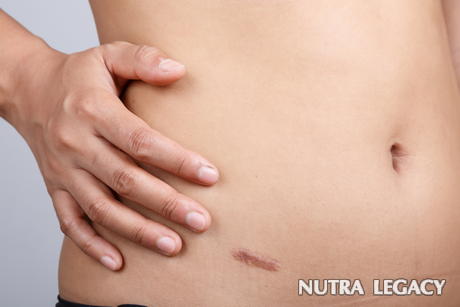Scar Tissue Treatment

- Scar tissue can include facial scars
- Scar tissue can include acne scars
- Scar tissue can include resistant scars
Scars are areas of different fibrous tissue that replace your normal skin. Scarring is just one of the body’s many natural healing techniques. Injuries, surgeries, infections and inflammations can all lead to the formation of scar tissue, but the most common cause is acne.
Scars can form anywhere on the body and the composition varies. They may be flat, sunken, lumpy, colored, painful or even itchy at times. The ultimate appearance of the scar depends on factors like skin type, injury type, location, nutritional status and the age of the one with the scar.
There are four different categories for scars:
• Keloid Scars: These scars have a protruding tendency. They extend far beyond the actual site of injury. Keloid scars are most likely the result of an aggressive process of healing and can affect one’s mobility over time. They can be treated with laser surgery, steroid injections or the help of a surgical scar removal procedure. Smaller keloid scars can be removed with the help of cryotherapy, which is a freezing therapy utilizing liquid nitrogen. Use silicon gel pressure treatment as a preventative measure.
• Contracture scars: Burnt skin leads to contracture scars. These scars are mainly responsible for skin tightening and can impair your mobility as well. In addition, contracture scars can dig deeper into your muscles and nerves causing adverse effects.
• Hypertrophic scars: Other than being raised and reddish in color, hypertrophic scars are similar to keloid scars. However, they do not grow beyond the site of injury. Again, treatment includes laser surgery and steroid injections.
• Acne scars: Severe acne, the result of a hormone fluctuations, always leaves its mark. There are different types of acne scars ranging from deep pit scars to angular scars and even wave-like scars. Treatment usually depends on the type of acne scar you have.
Acne scars types can be further divided as follows:
• Rolling Scars: These scars give a wavy appearance to the skin.
• Ice Pick Scars: These resemble acne scarring in the truest sense forming the all-too-familiar deep pits.
• Box Car Scars: With an angular appearance resembling chicken pox scars, box scars occur mostly on the forehead and cheeks.
• Hypertrophic Scars: These are usually thickened scars (better known as keloids).
• Pigmented scars: The term is slightly misleading because these scars appear as a result of cystinic or modular acne (painful bumps beneath the skin). They leave inflammed red marks, which can cause painful eruptions if picked. However, pigmented scars don’t last long and fade with time.
There are different techniques for scar treatment. Some advanced methods include laser treatment, surgical scar removal, steroid injections and the application of ointments. These techniques are safe, but should be supervised by a specialist.
The information supplied in this article is not to be considered as medical advice and is for educational purposes only.
|
One Response to “Scar Tissue Treatment” | ||||||||||||||





 22 Sep 2008
22 Sep 2008
I really had no idea that there were that many scars out there. I have a few acne scars but nothing like the few listed here, thank god!March 29th, 2009 at 11:31 am